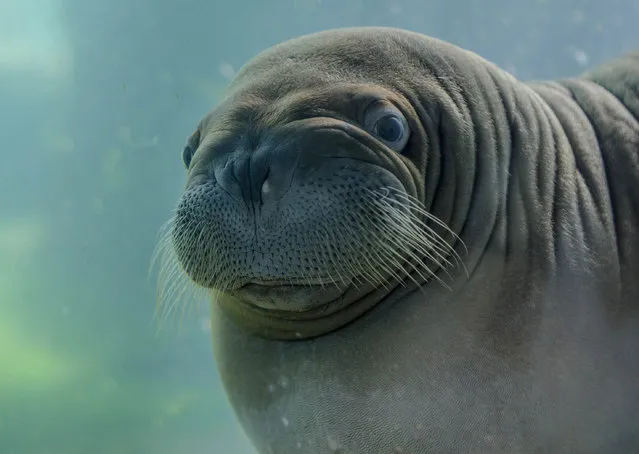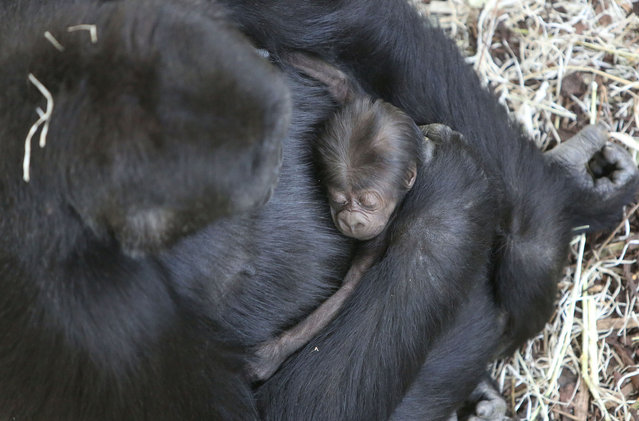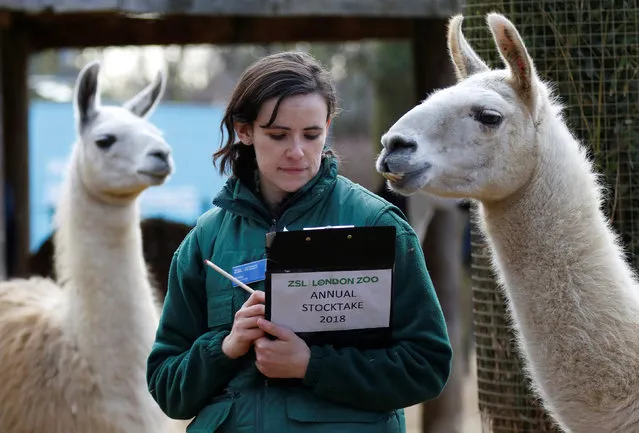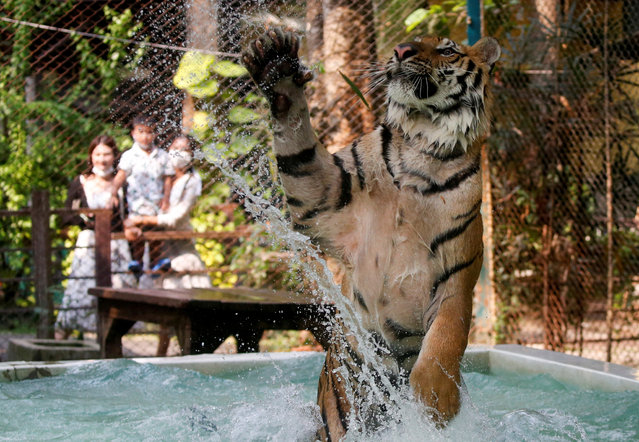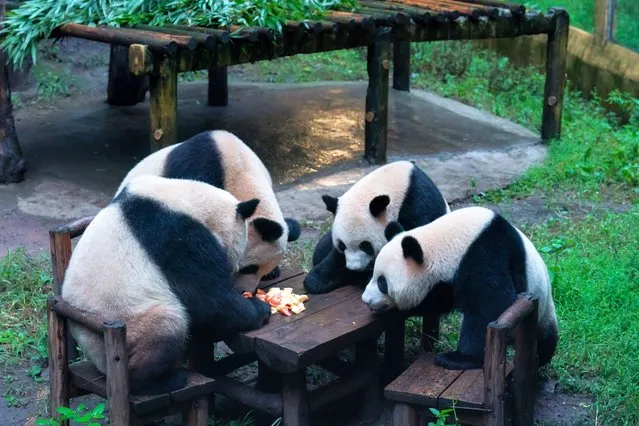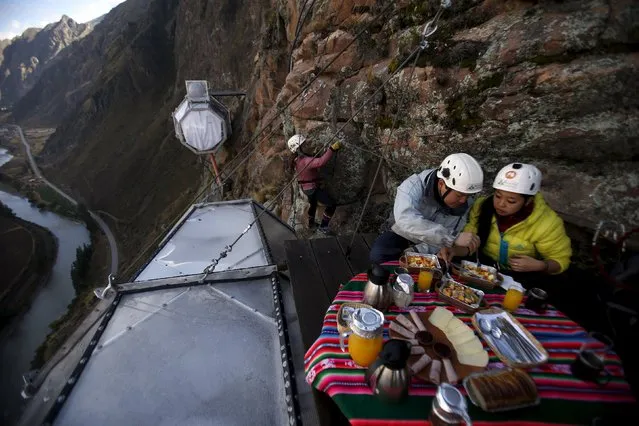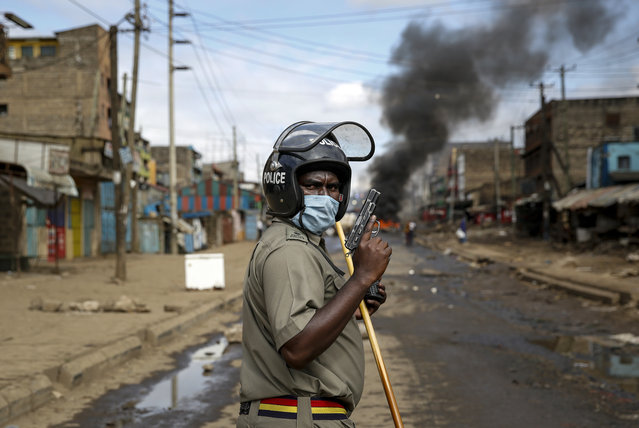
A police officer holds a pistol during clashes with protesters near a burning tyre barricade in the Kariobangi slum of Nairobi, Kenya Friday, May 8, 2020. Hundreds of protesters blocked one of the capital's major highways with burning tires to protest government demolitions of the homes of more than 7,000 people and the closure of a major food market, causing many to sleep out in the rain and cold because of restrictions on movement due to the coronavirus. (Photo by Brian Inganga/AP Photo)
